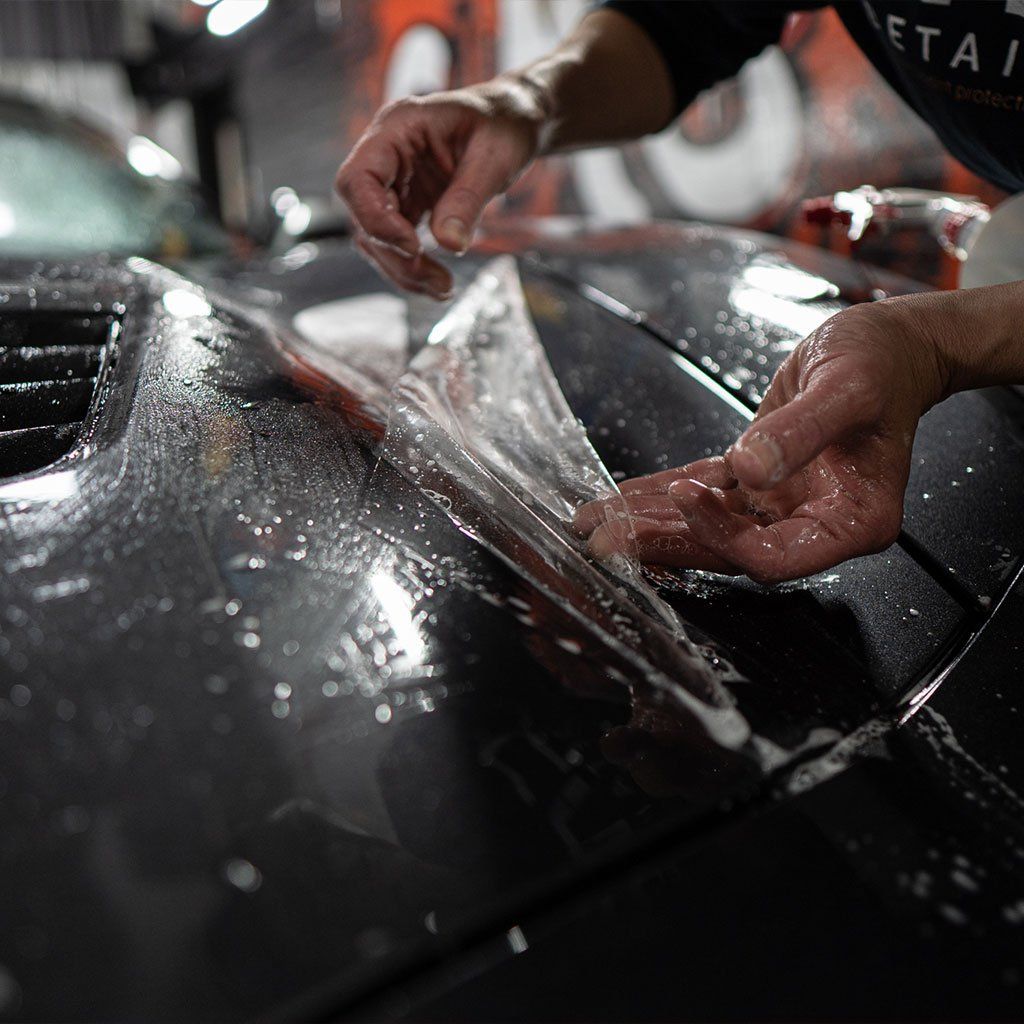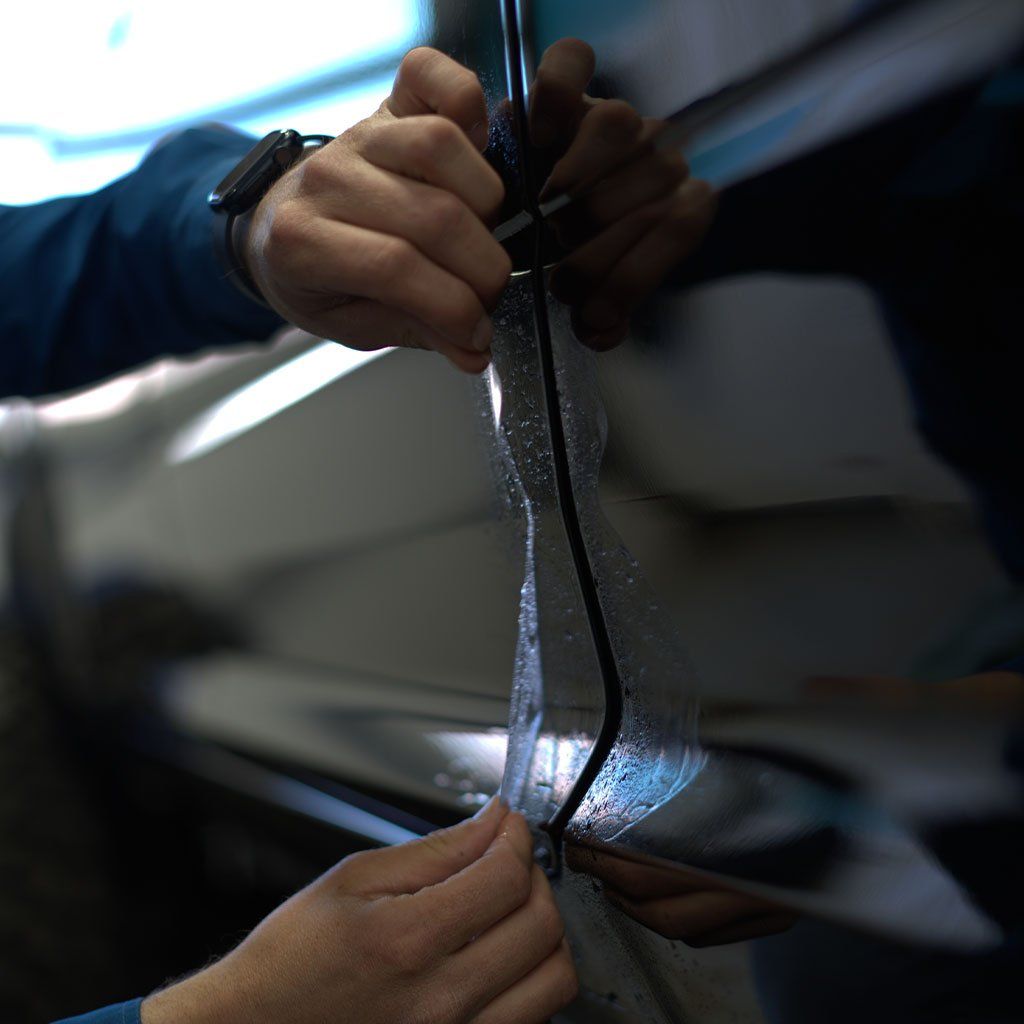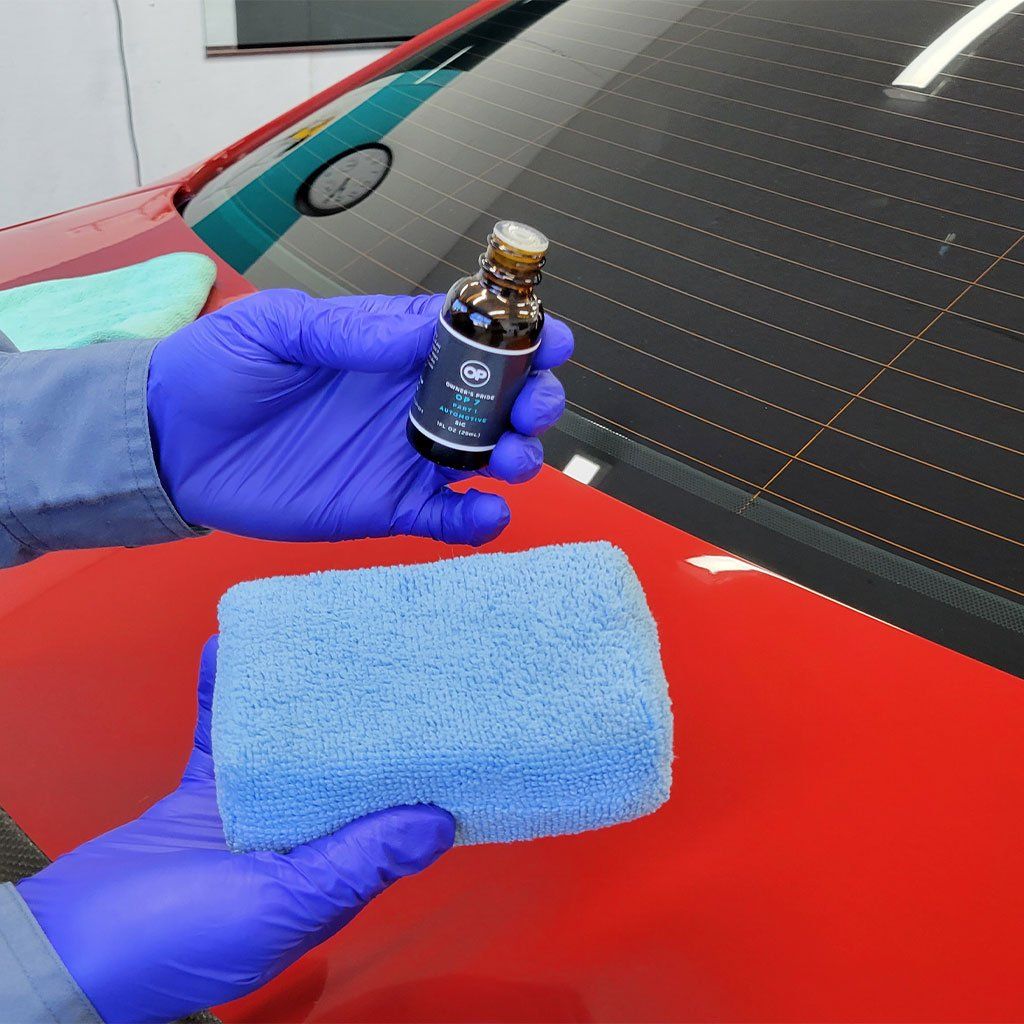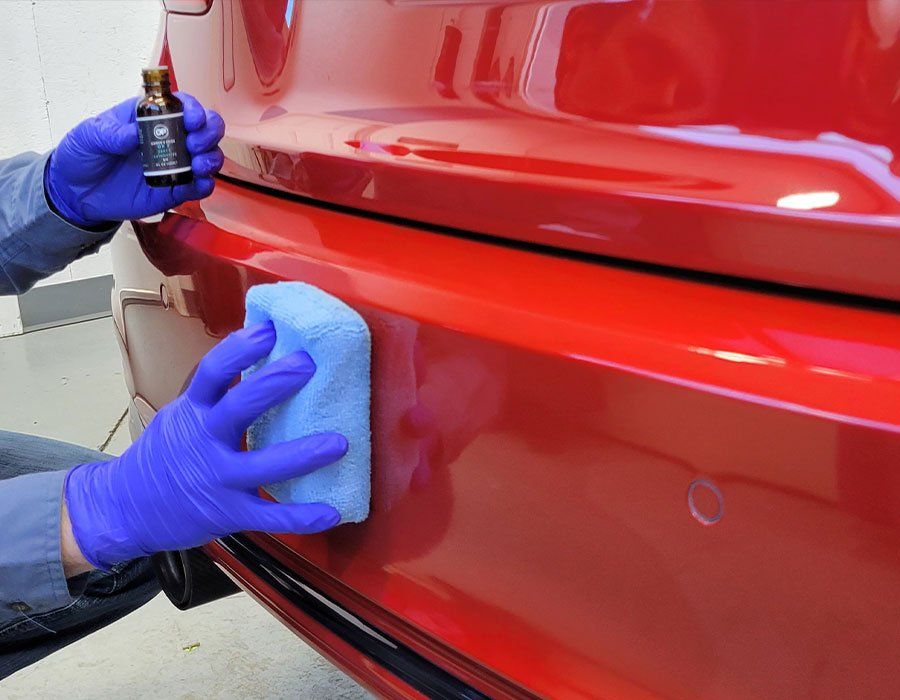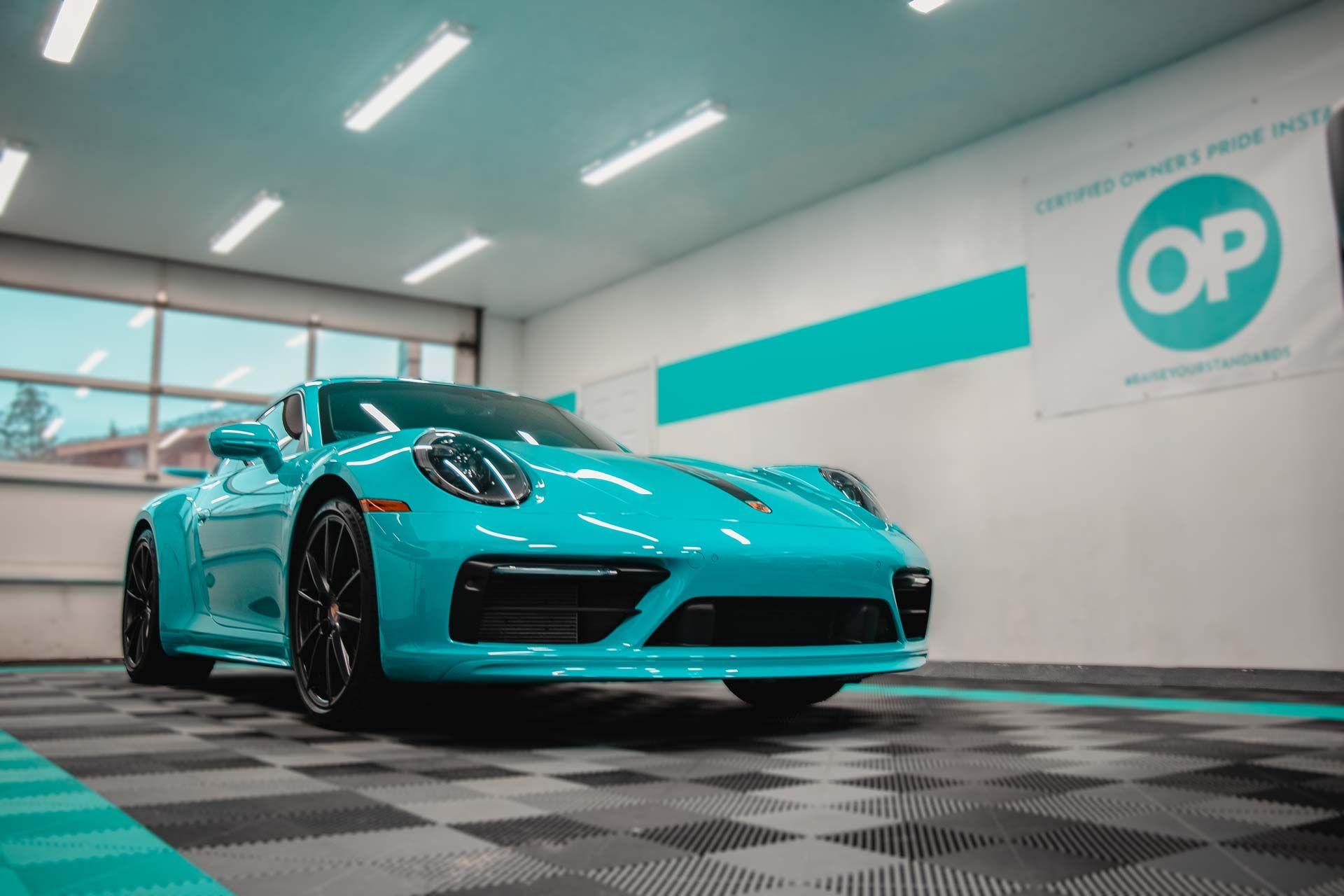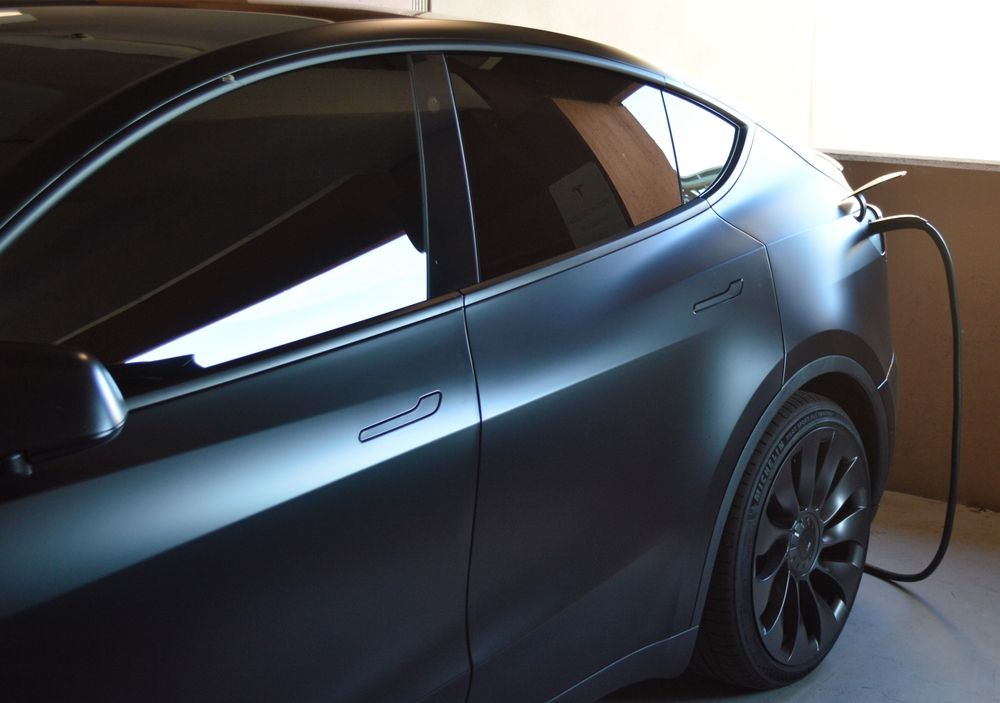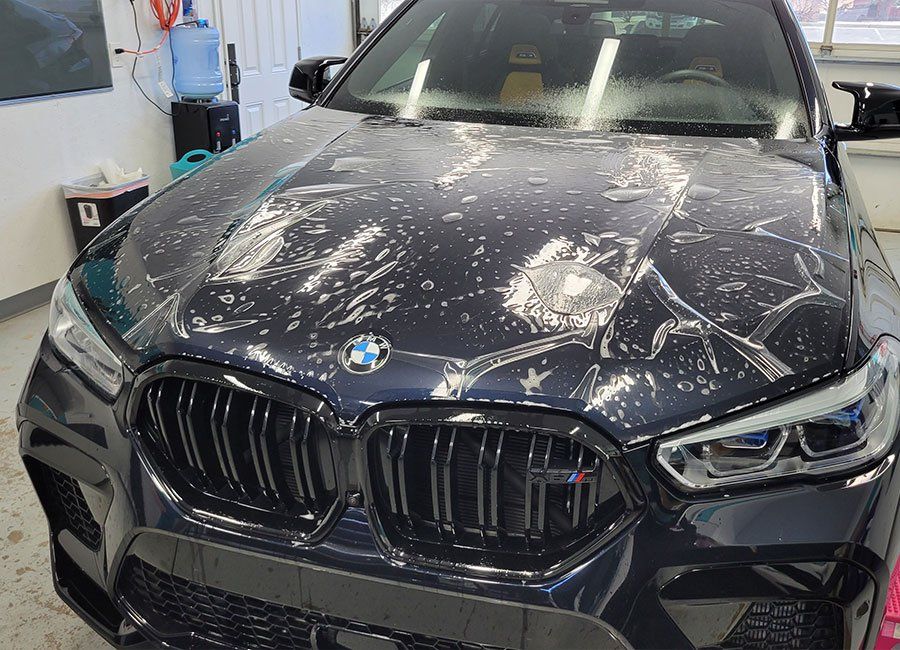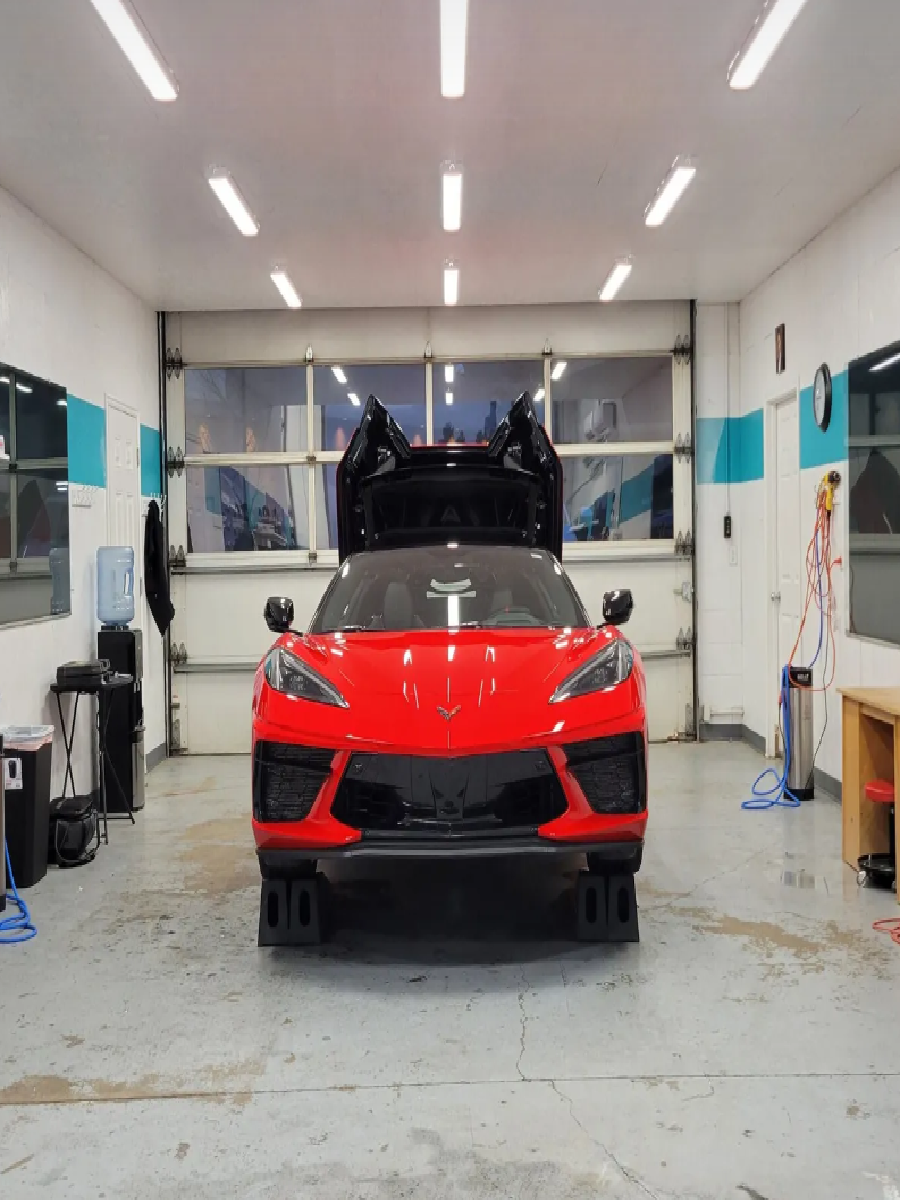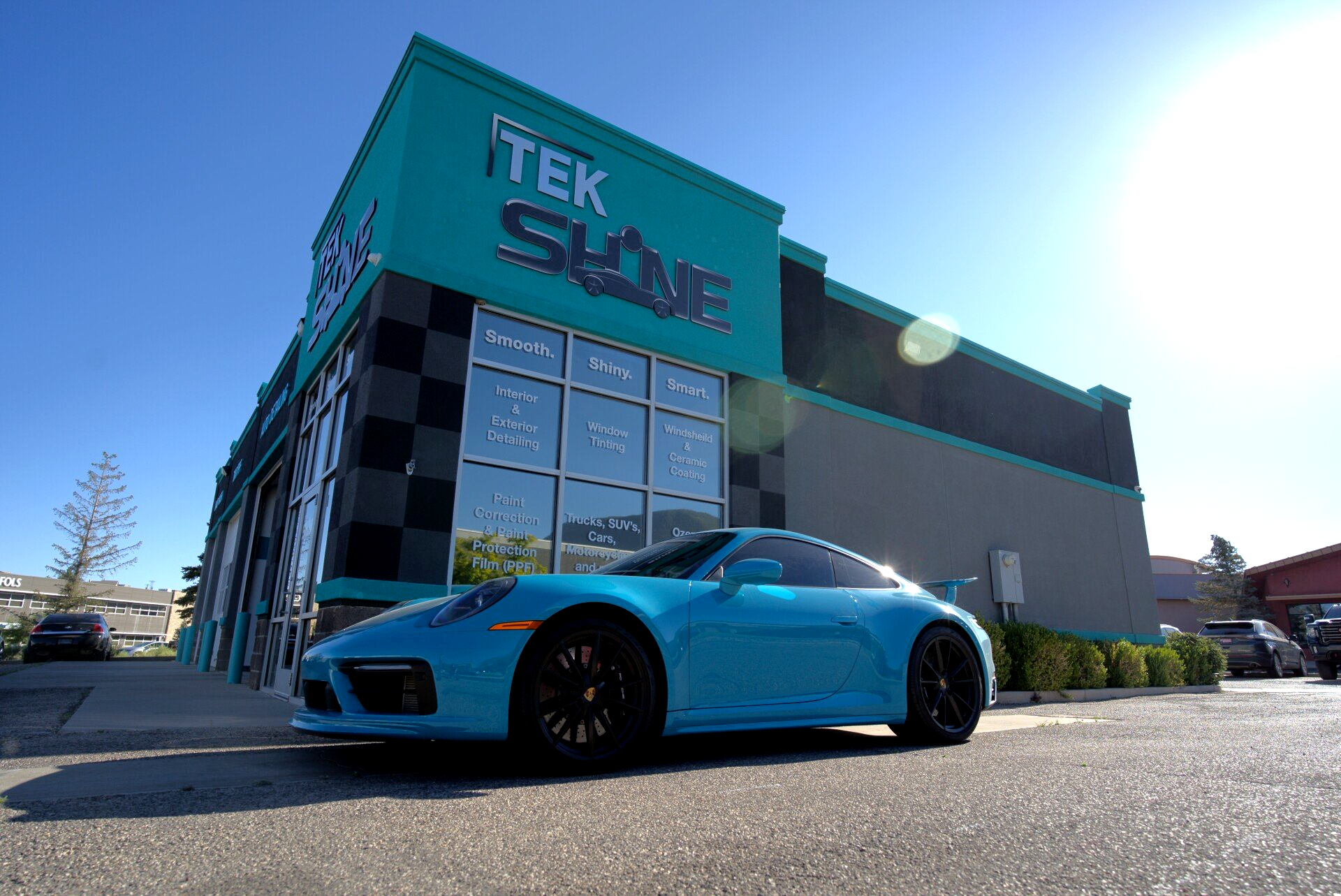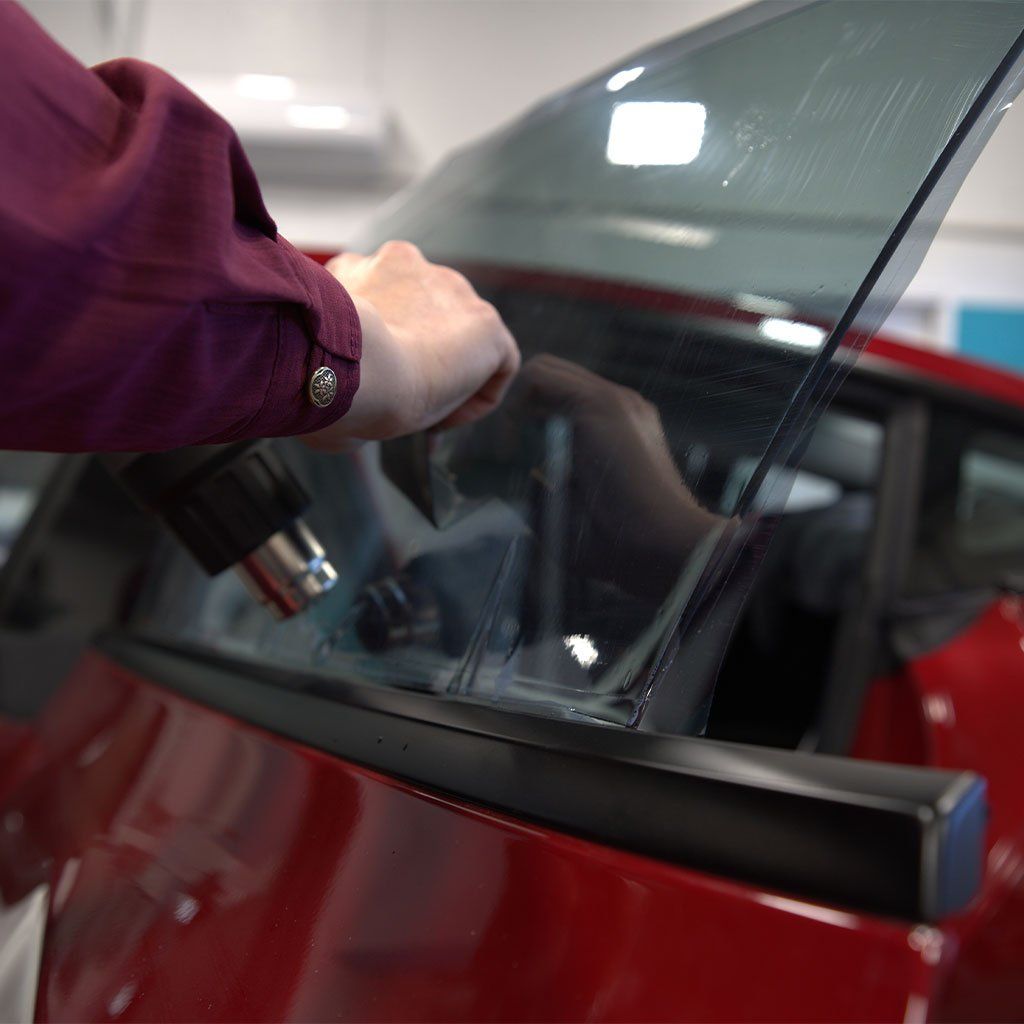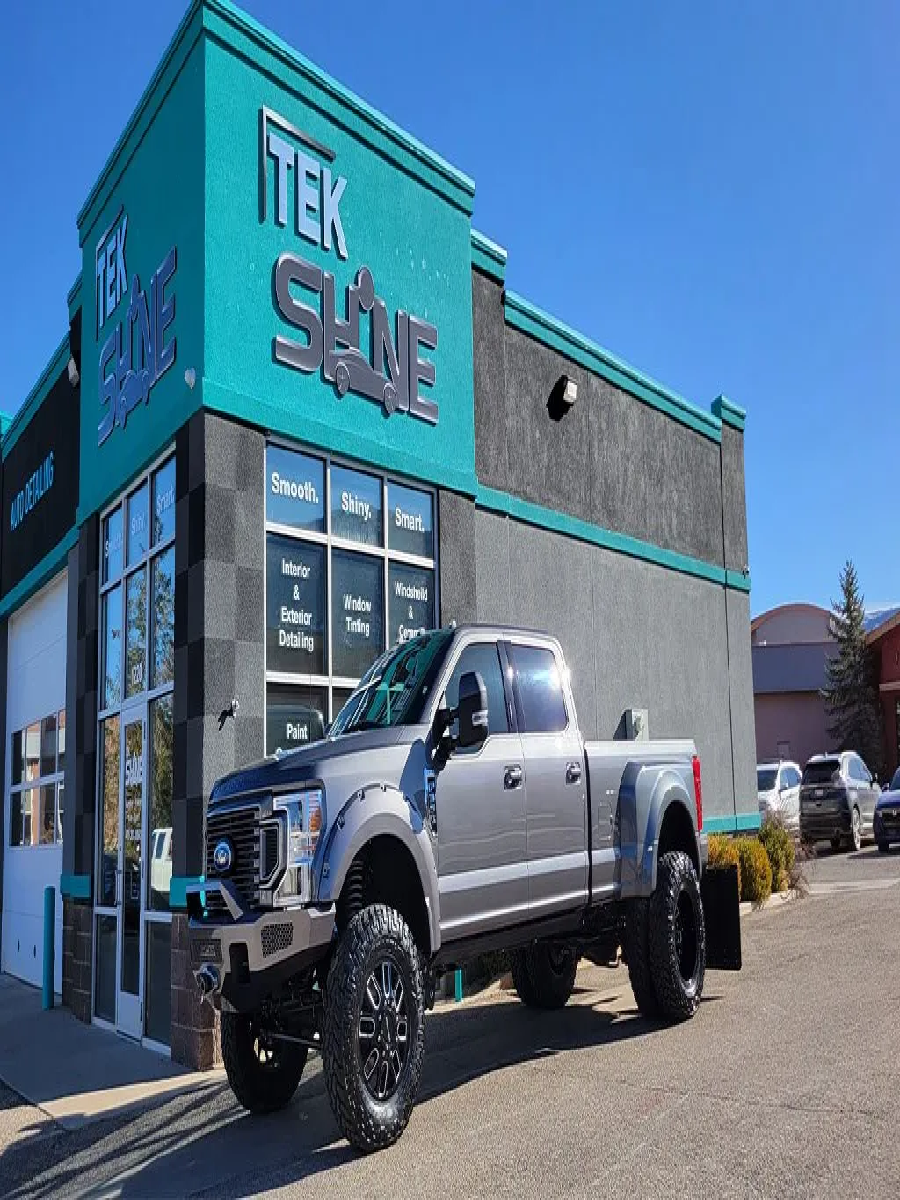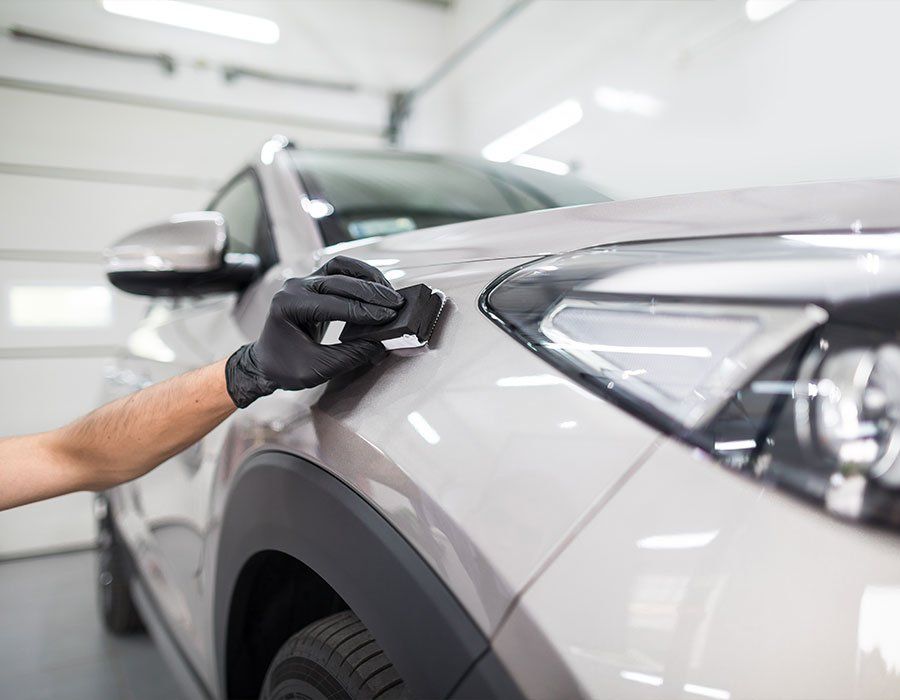PPF vs. Ceramic Coating: Exploring the Differences and Benefits for Car Paint Protection
CALL (435) 383-8663
Paint protection film, or PPF, and ceramic coatings both have roles in keeping your car looking fresh. PPF is a solid film that covers the car, shielding it from rocks and other harm. It is like an invisible layer of armor. On the other side, ceramic coating sticks to the car's paint and protects against dirt and other grime. Water slides right off like a duck's back. Each has its own advantages, like how PPF can cure itself if scratched or how ceramic coating makes maintaining your car's cleanliness easier. Selecting between the two depends on what you want to guard your car against.
The key difference lies in their protective properties. PPF, or paint protection film, offers superior resistance against scratches and minor damage, while ceramic coatings provide exceptional protection against UV rays and chemical contaminants. When deciding between the two, consider your specific needs for durability, maintenance, and aesthetic preferences.
What is PPF?
PPF or paint protection film, is like a superhero shield for your car. When applied to the exterior of a vehicle, it creates an invisible armor that protects your car's paint from various forms of harm. Imagine a second skin for your car, but one that's tough as nails. Unlike a regular shield, PPF has the magical ability to heal itself. That's right—it's made from clear, thermoplastic urethane film designed to fend off scratches, rock chips, and other minor damages. But that's not all. PPF also acts as a barrier between your car's majestic paint job and any environmental elements that might try to ruin it. This means it takes the beating instead of your car, allowing you to keep enjoying its pristine appearance for longer.
What sets PPF apart is its incredible ability to heal itself and resist the damaging effects of UV rays. This means your beloved vehicle stays looking fresh even under the harsh glare of the sun. Paint protection film is known for its self-healing properties and resistance to UV rays, providing long-lasting protection to the vehicle's paint. This means your car's gleaming paint job stays looking sharp and vibrant for much longer than if it were left exposed to the elements without any protection at all. So, if you want your vehicle to stay looking sleek and new despite whatever life throws at it, a paint protection film from the experts at TekShine might just be the superhero you need.
Understanding Ceramic Coating
Think of ceramic coatings as a shield, but for your car's paint. These coatings offer a layer of protection made from nano-ceramic particles that bond to the surface, creating an ultra-durable and heat-resistant shield. The primary purpose of the ceramic coating is to safeguard the paint from various elements that it's exposed to on a daily basis, and it does so with remarkable effectiveness.
When you apply a quality ceramic coating, you're effectively creating a barrier between the paint and potential damage. This implies that the coating deflects water spots, dirt, chemicals, and other contaminants, protecting the paint underneath. Not only does this protective layer maintain the aesthetic appeal of the vehicle, but it also makes cleaning easier and more efficient. Imagine your car's paint is like your skin, and the ceramic coating acts as an invisible layer of armor. It shields against environmental factors such as rain, UV rays, bird droppings, and harsh chemicals. Just like wearing sunscreen helps shield your skin from harmful UV rays, ceramic coatings protect your car's paint from oxidation due to UV exposure.
Key Benefits of Ceramic Coatings:
- UV Resistance: Prevents paint oxidation and fading over time.
- Easy Maintenance: Makes cleaning easier and preserves the shine of the car's paint finish.
- Chemical Protection: Shields against damage from harsh chemical contaminants.
Another important aspect to consider is that ceramic coatings provide excellent UV resistance. This resistance plays a significant role in preserving the color and vibrancy of your car's paint over time. It prevents the sun's UV rays from causing premature fading or oxidation of the paint, maintaining its factory-fresh look. But it's worth noting that, despite offering protection against environmental damages, ceramic coatings does not shield against scratches or rock chips as a paint protection film does.
PPF vs. Ceramic Coatings: Protection and Durability
In the quest to safeguard your car's paint from the rigors of daily use, both paint protection film and ceramic coatings provide valuable benefits. PPF is renowned for its exceptional scratch resistance and ability to endure minor damages due to its self-healing properties, effectively creating a shield around your car's delicate paint. This makes it an ideal choice for maintaining overall durability. Imagine a transparent layer, almost like an invisible armor that shields your car's paint from rock chips, scratches, and the wear and tear of daily use. This durable film provides peace of mind, knowing that your car's pristine finish is safeguarded from the harsh elements on the road. The self-healing properties of PPF ensure that any light scratches or blemishes disappear, maintaining the aesthetic appeal of your vehicle.
On the other hand, ceramic coatings provide a different kind of protection by creating an ultra-durable layer using ceramic particles. This offers superior defense against UV rays and chemical contaminants, providing an effective barrier against paint fading and oxidation over time. Think of it as a protective force field that keeps your car looking as good as new despite exposure to sunlight and environmental pollutants. It's important to recognize that while PPF excels in scratch protection and durability, ceramic coatings shine in their ability to combat the damaging effects of UV rays and chemical contaminants. This distinction is significant as both elements are constant threats to a vehicle's exterior appearance.
A Closer Look at Protection and Durability
Let's examine how these protective measures stack up when focusing on specific aspects:
- Scratch Resistance: Paint protection film offers outstanding scratch protection due to its thicker nature and impact-resistant attributes. The self-healing technology also makes it effective in maintaining a flawless finish.
- UV Protection: Ceramic coatings provide a strong defense against UV rays, preventing paint from fading and oxidation. These coatings help maintain the color integrity of the vehicle for a longer period of time.
- Resistance to Chemical Contaminants: Ceramic coatings form a robust bond with the surface, protecting against environmental hazards such as bird droppings and tree sap. This prevents long-term damage to the clear coat layer.
- Durability: Paint protection film tends to offer better long-term durability, with a lifespan of up to 5–10 years, depending on maintenance. On the other hand, ceramic coatings may last 2–5 years before requiring reapplication.
By breaking these factors down, we can see more clearly what each protection method does best. For example, PPF focuses on making things less likely to scratch and last longer, while ceramic coatings focus on protecting against UV rays and chemical pollutants. Understanding these distinctions between PPF and ceramic coatings allows us to make informed decisions based on our specific needs for car paint protection. Both methods offer valuable advantages tailored to different aspects of preserving the pristine condition of our vehicles.
Glare and Shine: Comparing Finishes of PPF and Ceramic Coating
When it comes to car paint protection, it's not just about safeguarding your vehicle from damage—it's also about making it look good. After all, who doesn't love the sight of a sleek, shiny car out on the road? So, let's explore how PPF and ceramic coatings contribute to enhancing the appearance of your vehicle.
Paint protection film is designed to shield your car's exterior from scratches, swirl marks, and other damages while retaining its factory finish. On the other hand, ceramic coatings create a smooth surface that resists the buildup of dirt and enhances the overall visual appearance of the car. It's like having two different sartorial approaches for your car's paint job—PPF acts as a sturdy protective overcoat, preserving the original look, while ceramic coatings act as a gloss-enhancing finisher, adding depth and luster to the paint.
One notable feature that sets ceramic coatings apart is their ability to maintain a deep, glossy shine on the vehicle’s surface. This creates a slick and reflective appearance that can really make your car stand out. Statistics show that ceramic coatings are commended for their ability to maintain a deep glossy shine on the vehicle’s surface, providing a slick and reflective look. This glossy shine not only adds an eye-catching element but also contributes to maintaining the overall value of your vehicle by preserving its luxurious appearance. As a result, cars treated with ceramic coatings exude a premium sheen that catches attention wherever they go.
When deciding between paint protection film and ceramic coatings, consider what you prioritize in enhancing the visual appeal of your vehicle. Whether you lean toward durable protection or an enduring glossy finish, understanding these distinctions will help you make an informed choice for customizing your car's aesthetic appeal.
Making Your Choice: Assessing Vehicle Protection Needs
Choosing between paint protection film and ceramic coatings is akin to selecting the right outfit for an occasion; you need to consider what fits best for the specific situation. So, let's delve into the nitty-gritty of evaluating protection needs so you can make a confident decision.
First, take a good look at your driving habits and environment. If you regularly drive on rough or gravel roads, where scratches from debris are more likely, PPF may be the better choice. It offers excellent scratch resistance and can protect your paint from chips caused by road hazards. On the other hand, if you're more concerned about maintaining the glossy appearance of your car and safeguarding it against UV rays and chemical contaminants, ceramic coatings might be the way to go. Consider how exposed your vehicle is to environmental elements. Does it spend most of its time indoors or under a cover? Or is it frequently parked outside, exposed to harsh sun, rain, and pollutants? PPF is well-known for its capacity to provide UV protection while also protecting against physical harm from rocks and other debris. Conversely, ceramic coatings form a durable layer over your vehicle's paint, offering exceptional resistance against chemical etching and UV exposure.
Next, think about long-term maintenance. Consider whether you'd like a protective solution that requires less frequent care or one that demands more regular attention. A paint protection film generally offers better durability with less maintenance needed compared to ceramic coatings, which may require occasional touch-ups for optimal performance. What's your level of commitment to maintaining the aesthetic quality of your vehicle? Do you enjoy investing time in meticulous upkeep, or do you prefer a lower-maintenance approach? Your personal preference plays a significant role in deciding which type of protection aligns best with your lifestyle and vehicle care routine. By carefully evaluating these considerations, you can identify which protective option best aligns with your vehicle's unique needs.
The good news is that you can combine both paint protection film (PPF) and ceramic coating services to offer superior protection for your vehicle's exterior. When used together, these two products provide comprehensive defense against various environmental hazards, enhancing both the durability and appearance of your car.
- Enhanced Protection: When you apply a ceramic coating over the PPF, you get the best of both worlds. A paint protection film acts as a robust shield against physical damage, while the ceramic coating offers protection against environmental contaminants and enhances the film's hydrophobic properties.
- Extended Longevity: The combination of both products ensures that your vehicle's exterior remains in excellent condition for a longer period. The ceramic coating can also make the paint protection film easier to clean and maintain, extending its lifespan.
- Aesthetic Appeal: The ceramic coating adds an extra layer of gloss and shine, enhancing the overall appearance of the paint protection film and giving your vehicle a pristine, polished look.
- Ease of Maintenance: The hydrophobic nature of the ceramic coating ensures that water, dirt, and grime slide off the surface more easily. This makes routine washing and cleaning much simpler and less frequent.
Premier PPF and Ceramic Coating Service in St. George, UT
TekShine is proud to offer premier
paint protection film and ceramic coating services in St. George, UT. Our expert team is dedicated to providing unparalleled quality and durability, ensuring your vehicle stays shielded from the elements and maintains its pristine appearance for years to come. With our meticulous craftsmanship and attention to detail, you can trust TekShine to deliver superior results that exceed your expectations. Don't settle for anything less than the best—schedule your appointment today and experience the difference with TekShine's advanced PPF and ceramic coating solutions. Call us at
(435) 383-8663 to get started!
Smooth. Shiny. Smart.
Vehicle protection and perfection from the inside out is what you will find here at TekShine of Cedar City & Hurricane, Utah! Founded in 2018 by the best auto detailing crew in the state of Utah, we have countless credentials that back our CCI Ceramic Coatings, Llumar Paint Protection Films and Window Tinting services, and all of the techniques and steps incorporated in each of our interior and exterior detailing packages. Being IDA certified, TekShine guarantees that customer expectations will always be met and the service provided will go above and beyond.
Quick Links
Our Location
1220 Sage Dr, Cedar City, UT, 84720, United States
Contact Us
Phone: (435) 383-8663
Email: office@tekshine.us
This website was designed by the team at Detailers Roadmap, a platform developed for detailing operators across the globe.
All Rights Reserved | 8bitcreative, LLC | TekShine

